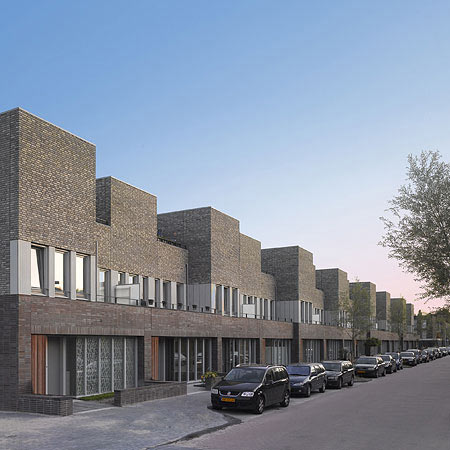
Roomburg housing by Snitker/Borst
Dutch architects Snitker/Borst have completed 48 split-level homes in Leiden, the Netherlands, according to the Ruamplan concept developed by architect Adolf Loos in the 1920s.
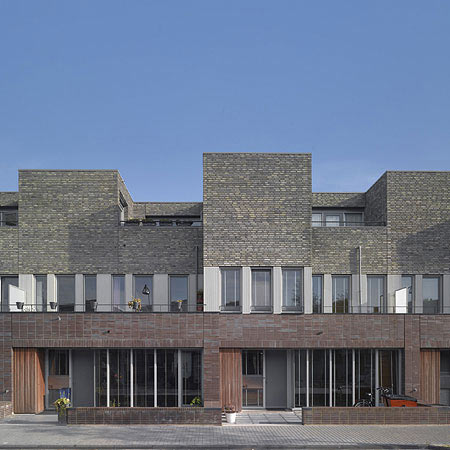
Called Roomburg, the development has a 400 metre-long façade, divided into three blocks.
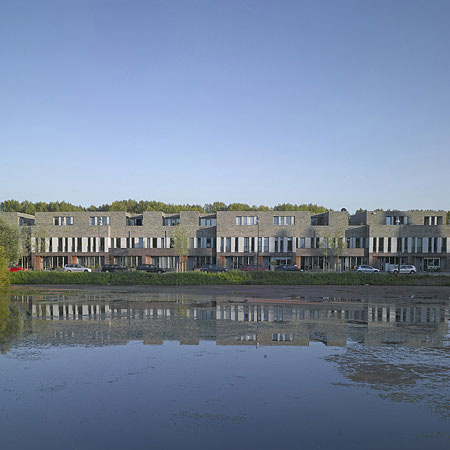
Loos' theory recommends viewing buildings as a series of interlocking rooms overlooking one-another.
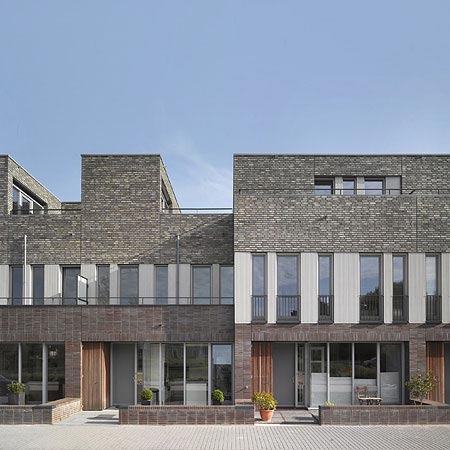
Interiors of the Roomburg project feature spiral staircases and split-level floors on the first storey.
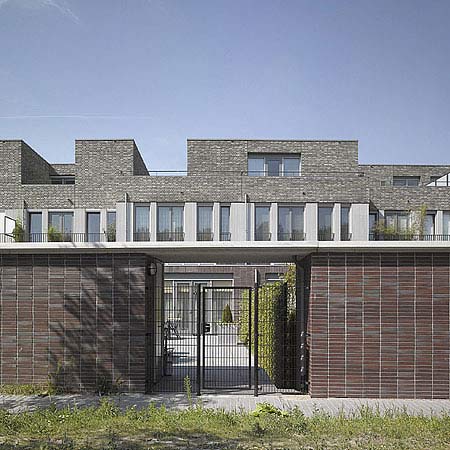
Different types of brickwork are used on the plinth and upper levels, which recede from the street and have alternating balconies.
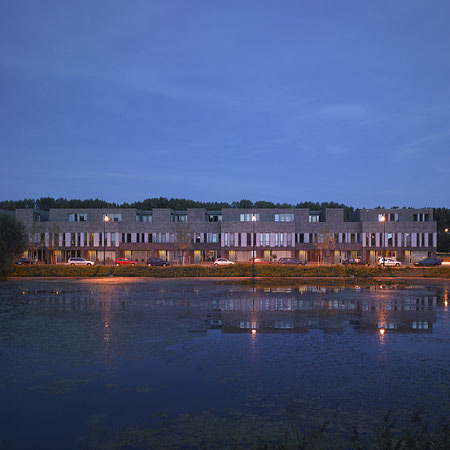
Here's some text from the architects:
--
The project is part of the new residential area Roomburg in Leiden, the Netherlands.
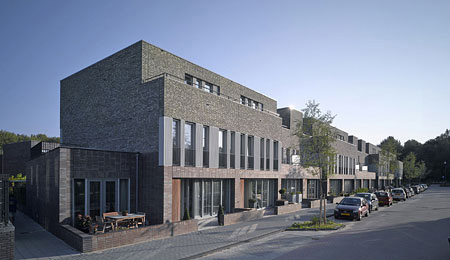
The houses are situated along the Octavialaan, which is the northern border of the subarea ‘Landscape’.
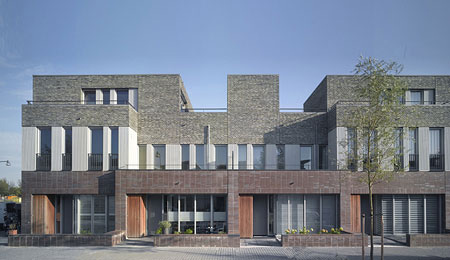
This is the last stage in the development of Roomburg. The façade wall is 400 meters long and it is divided into three blocks.
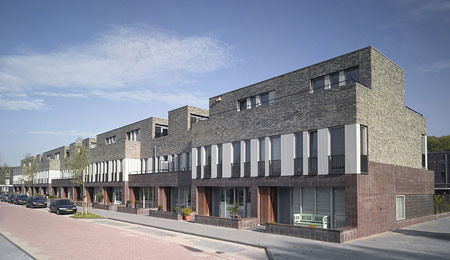
In the project we succeeded to make ‘Loosian’ dwellings with a larger ceiling height and a spatial section.
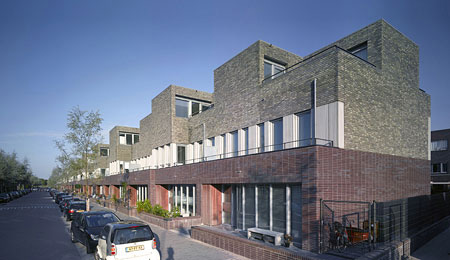
The project is inspired by the ‘raumplan’-villas of Adolf Loos. Snitker/Borst architects does research into the possibilities to create larger ceiling heights, especially in apartment buildings.
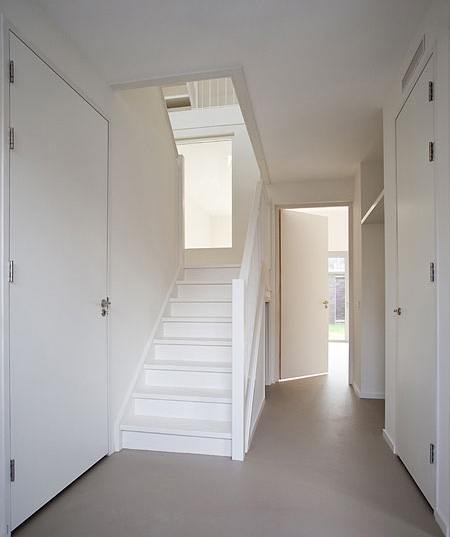
The research consists of the analysis of realized projects and the development of new spatial models.
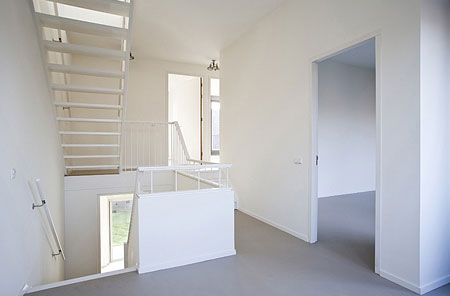
The project in Roomburg contains 48 single-family houses with a floor space that varies between 158 and 175 m2.
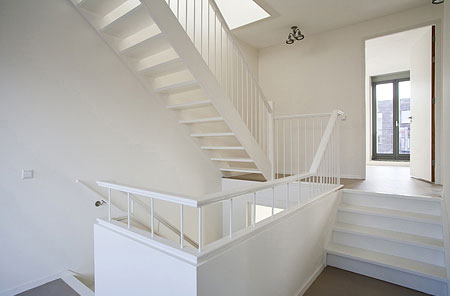
The project consists of five housing types with alternating terraces.
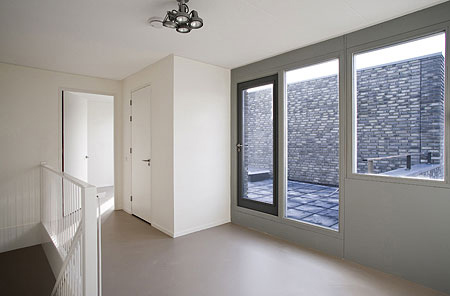
A subtle linking of these five housing types results in a vivid façade with rhythm, relief and sculptural expression.
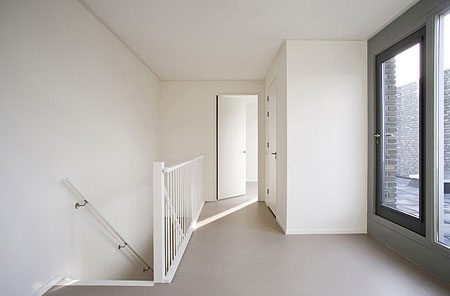
The cubist architecture from the twenties and thirties of Dutch architects like J.J.P. Oud, Jan Wils and J.B. van Loghem was a reference for the project.
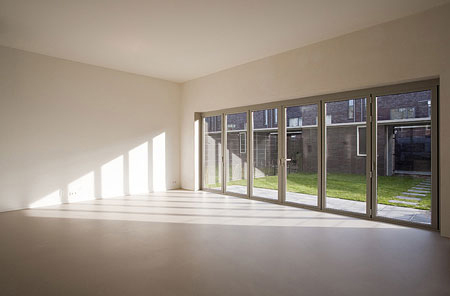
The project has a small relief in the plinth and a more expressive relief in the upper structure.
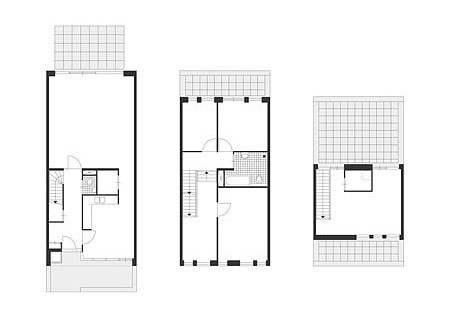
The plinth and the upper structure are made in two kinds of brickwork.
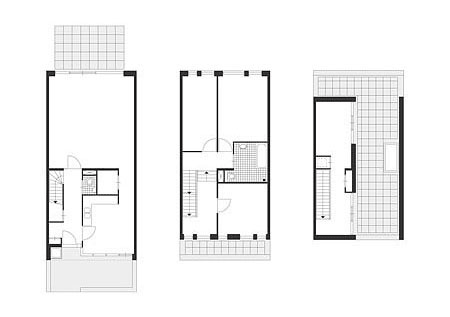
They are separated by a zone of windows and prefabricated concrete elements on the first floor.
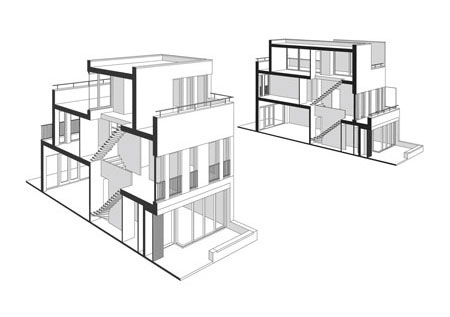
The façade recedes from the building line and the top floor terraces provide for extra space and light in the street.
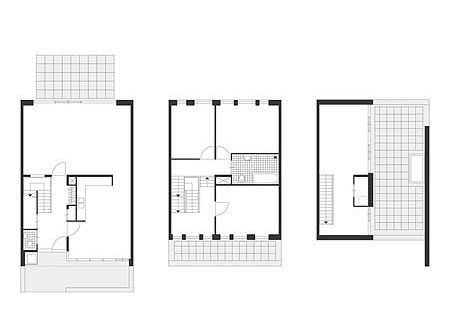
The houses have a split-level floor on the first floor.
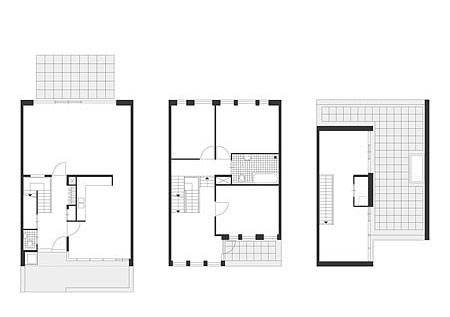
The split-level generates a living room with a ceiling height of 3,4 meter.
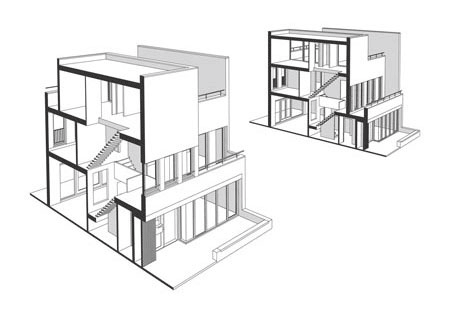
Also the rooms on the first floor at the street side have larger ceiling heights.
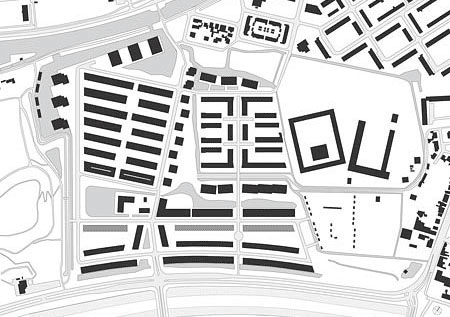
The split level floor creates a spatial staircase that makes the daylight fall into the heart of the house.
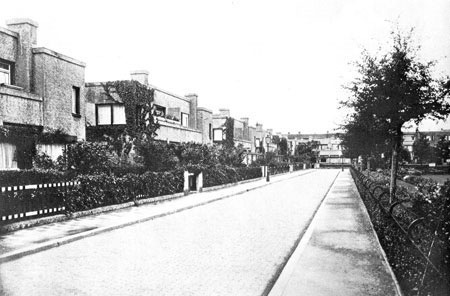
Client: Municipality of Leiden
Program: 48 single-family houses
Location: Roomburg, Leiden, the Netherlands
Architect: Leen Borst, Mark Snitker
Project team: Andrea Alvarez, Milos Dimitrijevic, Janfrans van der Eerden, Brigitte Kwa, Rudy Davi, Zsuzsanna Nagy
Contractor: Du Prie Bouw en Ontwikkeling
Structural engineer: Pieters bouwtechniek Haarlem
Start commission: 2005
Year of construction 2007-2009
Photographs exterior Roos Aldershoff
Photographs interior Dennis Sies
SNITKER/BORST/ARCHITECTEN/ (www.sbarch.nl)